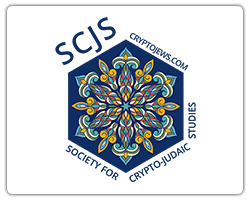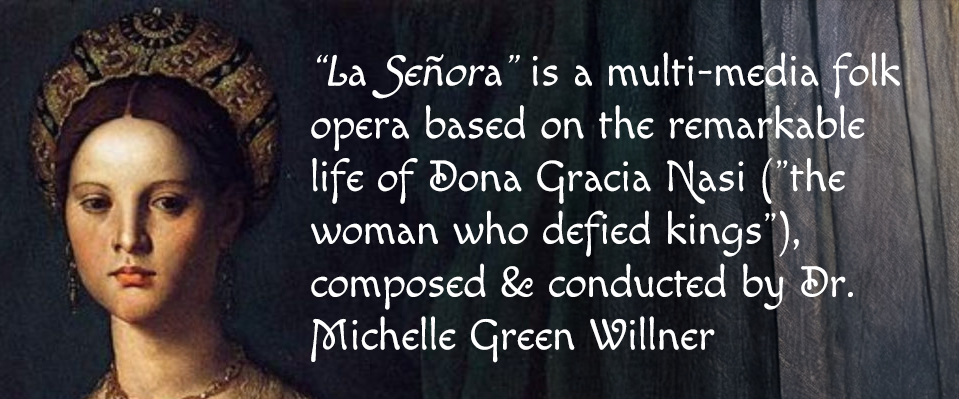In crossing the Atlantic Ocean en route to the Iberian Peninsula I could imagine the journey my ancestors made from Barcelona to the New World in the eigthteenth century In many ways my journey to Madrid Spain can be described as a return journey to an obscure homeland It is from this obscure homeland that I locate my even more obscure Sephardic heritage In many ways my journey to Spain brought meaning and form to a fractured and colorless heritage My journey rendered meaningful a history that I not only knew orally but could never really prove Therefore it is in this sense that I describe my journey as a return journey It is not that I returned to a place once visited but that I return to a clearer and more colorful history
For someone who lives in the Southwest recovering my Jewish heritage has not been easy With the generous help of the Hispanic Theological Initiative and Brite Divinity School I was not only given the opportunity to obtain a clearer image of my history but also participate in a historic event the First St Louis University Conference titled “The Conversos and Spanish History 1248 to 1700″ which was held May 2122 2004 in Madrid Spain Some of the notable presenters were Paloma DáazMas and Francisco Márquez Villanueva During this conference I was able to engage in stimulating and insightful dialogue with scholars of converso and Sephardic history From the various presentations and personal conversations I received strong confirmation of my own research on my family’s Sephardic heritage
One particular conferee Kevin Ingram informed me that his article would be of considerable interest to my own family research Ingram’s article ’Ignatius Loyola’s Converso Background” argues that many of the families Loyola took residence with were of converso background Ingram suggests that these associations come as a result of Loyola’s own converso background Among the converso figures associated with Loyola was Velázquez Cuéllar a sea merchant from the town of Cuéllar It is well documented that in the town of Cuéllar there was a vibrant Jewish community before the expulsion His research strengthens the history I received from my uncle Derile Cuéllar Throughout my childhood my uncle told me of the Jewish connections of the Cuéllar family Oral narratives and family documents (ie deed of a Spanish land grant) suggest that my family came to New Spain in the 1700’s and settled in the Northern Nuevo Leon area Although research still needs to be done Ingram’s presentation only invigorates my own quest for substantiating my uncle’s claims In my conversations with Ingram the possibility of a Cuéllar in the New World maintaining a converso heritage is not unreasonable
Presents Paper on Lope de Vega Play
At the conference I presented a paper titled “A Portrait of the Converso in Lope de Vega’s play El Vaso de Eleccion San Pablo”which fell under the Subtextual Voices section From this late 16th century play I demonstrated the potential link between Vega’s main character Saulo and the converso figure In her dissertation Roberta Zimmerman Lavine points out that Vega’s opus poetically captures every aspect of Golden Age society thus it is not a surprise that one would find reflected in his work themes involving the converso figure In El Vaso de Eleccion Vega draws on key converso subjects such as conversion Jewish identity and the law of Moses in developing the play’s overall theme In Vega’s portrayal of Saulo there lies a stereotypical and subversive portrait of the converso figure Vega presents Saulo as a zealous Jew who is proud of his Jewish lineage It is in this portrait of Saulo that he emerges as the enemy of Christians This portrayal of Vega’s main character not only intensifies the drama but establishes various hostile dichotomies such as the Law of Moses and the Gospel the judaizer and the Christian In the end my participation in the conference not only contributed to understanding my own history but it also allowed me to be an active agent in acknowledging the antiSemitic environment from which this play emerged Within this oppressive context the voice of the converso community was silenced and obscured at all levels of Golden Age Spanish society This national sentiment was often propagandized in contemporary literature
In the days I had left following the conference my return journey began to embody elements of a pilgrimage Though many of the sites I visited are not internationally recognized pilgrimage sites Their connection to converso and Sephardic history made them personally sacred The first site was the Plaza de Vazquez de Mella on the Calle de las Infantas In 1692 a judaizing cell was apprehended from a private home in Madrid on the Calle de las Infantas On July 4 1832 at the Puerta del Alcala also called the quemadero or brasero these judaizing conversos were publicly punished in the last auto de fe held in Madrid during the reign of Philip IV Of the fortyfour people sentenced only the judaizing conversos were burned at the stake (Heilpe 1994 222) Nowhere in this space is this history memorialized All that remains is an empty plaza surrounded by uninspiring architecture mildewed monuments and graffiti filled walls
Visit to Sinagoga del Tránsito
Among the other sacred places I visited was the Sinagoga del Tránsito and Sephardic Museum located in the Jewish neighborhood east of Toledo This inspiring synagogue was ordered to be constructed in 1336 by Samuel haLevá treasurer of Peter I of Castille and advocate of the Sephardic Jews Its headboard and high parts are decorated with nazará plaster (Muslim dynasty that ruled in Granada from the thirteenth to the fifteenth centuries) with Hebrew and Arabic inscriptions The Synagogue of Samuel haLevá is popularly known as the most important demonstration of hispanojudáo architecture In the synagogue I could still sense the spirit of the once vibrant Jewish community that occupied its halls and galleries The walls and ceilings in the synagogue embodied this community’s other history
In touring the synagogue I had the privilege to speak with a Spanish gentleman who had recently discovered his Sephardic background Overhearing his comments about the synagogue I asked him if he could help me identify Ps 122: 45 on the wall of the Galeráa de Mujeres This led to a conversation about his return to Sephardic Judaism He was intrigued with my own efforts to recovery my Jewish roots The gentleman encouraged me with a passage about dry bones in Ezekiel 37 112:
Then he said to me “Mortal these bones are the whole house of Israel They say Our bones are dried up and our hope is lost; we are cut off completely Therefore prophesy and say to them Thus says the Lord GOD: I am going to open your graves and bring you up from your graves O my people; and I will bring you back to the land of Israel (1112 NRSV)
According to him these prophetic verses refer to the thousands of Sephardic Jews dispersed throughout the world who will recovery their Jewish heritage
In the end through the conference synagogue and museum I was able to envisage the ritual symbols rhythms and places associated with the cryptoJewish experience of my ancestors My journey to Spain has given me a clearer image to a once faceless and obscure history The vivid images experienced in my journey to Spain have both confirmed and challenged my Jewish identity My journey serves to form a poetic language imbued with visual power that will forever prompt my imagination and stir my heart It has allowed me to traverse an imaginary realm mythscape symbolic sacred geography and a mythopoetic world that captures the essence of my cryptoJewish heritage My journey my return my pilgrimage has converged with the journey of my ancestor where by an obscure history is replaced by a tangible history
GREGORY LEE CUELLAR is a third year PhD candidate of Hebrew Bible/Rabbinic Literature at Brite Divinity School in Fort Worth TX A cryptoJewish descendent from Cuero TX he plans to teach of Hebrew Bible His dissertation topic explores an interpretation of Psalm 122 that takes into account the Sephardic liturgical tradition






My mother’s maiden name was Cuellar. She was born in Rio Arriba, New Mexico. Her father was Luis Cuellar. He had a brother named “Santa Cruz.” I remember him always wearing a black rimmed hat, black jacket and pants, carrying a Bible and always talking about “end” times. My uncle Joe Cuellar was at Santa Cruz’s hospital bedside dying, when he declared “somos Judios” and what he wanted done when he died. The Cuellar history/story passed on to us was that the 3 brothers who left Spain were wanted by the law–they were captured in Mexico, and escaped prison. In order to evade being captured again—they split into 3 directions. Our Cuellar line came to New Mexico. My mother was a single child and she died as a result of undiagnosed Hemochromotosis. I have a half sister, who was diagnosed dramatically with Hemochromotosis. My maternal grandmother’s family was Chavez, Archuleta was Puerto de Luna to Las Vegas, New Mexico area. I think the Hemochromotosis which has been showing up in the 80s and 90s? may be a marker for Ashkenazic early presence in NM along with Sephardic. My maternal grandmother’s family line can be traced to the early first colonization of NM.